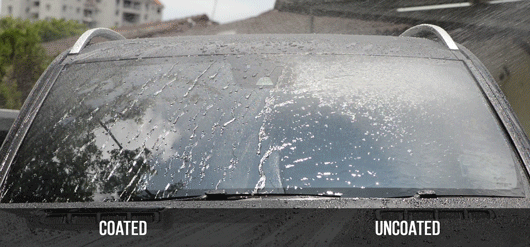Why Drivers Trust Ceramic Coating Philadelphia for Superior Car Treatment
Why Drivers Trust Ceramic Coating Philadelphia for Superior Car Treatment
Blog Article
Why Ceramic Finish Is the Ultimate Solution for a Flawless End Up
Ceramic coating has become a leading solution for those looking for a flawless coating for their vehicles, many thanks to its impressive toughness and safety attributes. This sophisticated fluid polymer not only bonds effortlessly with factory paint however also supplies an awesome barrier versus usual dangers such as scrapes, UV rays, and toxic wastes. Moreover, its hydrophobic homes simplify upkeep while enhancing aesthetic charm. Nonetheless, comprehending exactly how this innovation compares to traditional methods and discovering its application subtleties can disclose much more concerning its value. What aspects genuinely set ceramic coating apart?
What Is Ceramic Coating?

When used properly, ceramic coating produces a hydrophobic surface area that fends off water and dirt, making it simpler to cleanse and preserve. Unlike conventional waxes or sealers, which generally supply temporary security, ceramic finishes can last for several years, depending on the item quality and application technique. The procedure of using ceramic coating needs careful prep work, consisting of comprehensive cleansing and sometimes repaint correction, to ensure ideal bonding and efficiency.
Ceramic finishes are not restricted to auto surface areas; they can likewise be made use of on numerous materials, including glass, steel, and plastics, offering a versatile service for boosting defense. On the whole, ceramic coating represents a significant improvement in surface protection technology, incorporating both aesthetic and functional benefits for a large range of applications.
Benefits of Ceramic Finish
While many surface area defense alternatives exist, the advantages of ceramic layer stick out because of its unique residential properties and lasting efficiency. One of the key advantages is its extraordinary resilience. Ceramic Coating Philadelphia. Unlike typical wax or sealers that need frequent reapplication, ceramic coverings provide a resistant layer that can last for several years, dramatically lowering maintenance initiatives
An additional noteworthy benefit is boosted defense against ecological impurities. Ceramic finishings create a hydrophobic surface area that wards off water, dust, and various contaminants, making it easier to cleanse. This attribute not just maintains the car's look yet likewise lessens the threat of corrosion and oxidation, especially in extreme weather.
Moreover, ceramic layers supply superior resistance to UV rays, protecting against fading and destruction of paint over time. This UV protection is vital for maintaining the visual value of surface areas and lorries exposed to direct sunlight.
Furthermore, the shiny finish achieved with ceramic coating boosts the general aesthetic allure, giving surface areas a showroom-quality shine. In general, ceramic finishings stand for a significant innovation in surface area security technology, giving long-lasting advantages that deal with both aesthetic and functional requirements.
Exactly How It Functions
Recognizing the science behind click here for info ceramic finishes reveals how they give such amazing defense and durability. At its core, a ceramic coating is a fluid polymer that chemically bonds with the vehicle's manufacturing facility paint.
The application process entails several actions, including surface prep work, which is critical to achieving optimal adhesion. Once used, the layer goes through a treating process, throughout which it hardens and creates a semi-permanent bond with the paint surface. This bond is what identifies ceramic finishes from standard waxes and sealers, providing a longer-lasting protective barrier that can sustain for years.
Moreover, the density of the finishing can boost its protective high qualities, guaranteeing that it can hold up against extreme conditions. Eventually, the scientific research of ceramic finishings integrates sophisticated this contact form materials with innovative application strategies to provide an unequaled level of protection and visual improvement for lorries.
Comparison With Traditional Approaches
When contrasted to typical paint security methods such as waxes and sealants,The benefits of ceramic coatings become especially obvious. While waxes provide a temporary shine, normally lasting a couple of weeks to a pair of months, ceramic coverings give a durable protective layer that can sustain for several years. This toughness dramatically lowers the regularity of reapplication, making ceramic layers an extra cost-effective service with time.
Additionally, traditional techniques frequently require substantial preparation and multiple applications to accomplish an adequate degree of security. In comparison, ceramic finishings bond at a molecular degree with the lorry's surface, creating a durable guard versus environmental contaminants like UV rays, acid rainfall, and road salts. This bond improves the lorry's resistance to scratches and swirl marks, which are common with standard waxes and sealants.
Moreover, the hydrophobic properties of ceramic coatings ward off water and dirt, leading to much easier cleansing and maintenance. In comparison, wax and sealant-treated surfaces can attract gunk, requiring more frequent cleaning - Ceramic Coating Philadelphia. In general, ceramic finishings not only provide premium defense yet also supply a much more aesthetically appealing and long-lasting surface, developing them as the recommended selection for critical vehicle proprietors
Application and Maintenance Tips

Utilizing a foam applicator, use the coating in tiny sections, adhering to the maker's standards relating to thickness and overlap. Enable sufficient healing time between coats, usually 1 day, to guarantee correct bonding. After application, it is vital to stay clear of exposure to water or extreme elements for at least a week to permit the covering to completely cure.
For upkeep, wash the lorry routinely with pH-balanced soaps and prevent abrasive materials. Touchless browse this site automobile cleans are suggested to minimize damaging. Additionally, using a ceramic upkeep spray can improve the covering's hydrophobic residential or commercial properties and longevity. Regular examinations for any kind of signs of wear will aid keep the layer's honesty and protect that immaculate coating.
Final Thought
In final thought, ceramic finish emerges as a remarkable option for achieving a flawless automotive finish. By forming a durable bond with manufacturing facility paint, ceramic layer effectively guards versus scrapes, UV rays, and ecological pollutants.

Report this page